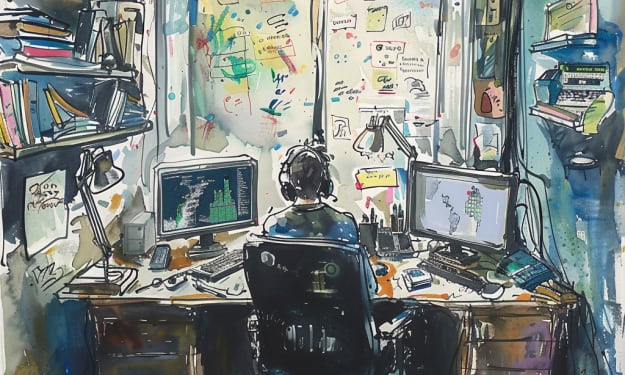The Costly Acquisition: How Bed, Bath & Beyond's $11.8 Billion Mistake with Cost Plus World Market Led to its Downfall
A Case Study on the Dangers of Overpaying for Acquisitions and Failing to Adapt to Changing Consumer Trends in the Retail Industry

Bed Bath & Beyond, the popular home goods retailer, has been struggling in recent years. Once a go-to destination for bedding, home decor, and kitchen supplies, the company has fallen on hard times, and many analysts believe it’s due to a massive mistake the company made in 2015.
In 2015, Bed Bath & Beyond acquired Cost Plus World Market for $495 million. Cost Plus World Market was a specialty retailer that sold furniture, home decor, and gourmet food products. The acquisition seemed like a good idea at the time, as Bed Bath & Beyond was looking to diversify its product offerings and appeal to a wider range of customers. However, the acquisition would prove to be a costly mistake.
The problems with the acquisition began to surface almost immediately. Cost Plus World Market was struggling financially, and the acquisition did not help matters. Bed Bath & Beyond had overpaid for the company, and it was saddled with debt as a result. The company was forced to take out a $1.5 billion loan to pay for the acquisition, which put it in a precarious financial position.
The acquisition also created operational challenges for Bed Bath & Beyond. The company had never operated a business like Cost Plus World Market before, and it was not prepared for the complexities of running a specialty retailer. The company struggled to integrate the new business into its operations, and it faced significant supply chain and logistics issues.
As a result of the acquisition, Bed Bath & Beyond began to experience declining sales and profits. The company’s stock price fell, and investors became increasingly concerned about the company’s future. Bed Bath & Beyond was forced to close stores and lay off employees, and its reputation began to suffer.
The company’s problems were compounded by changing consumer preferences. As more consumers began to shop online, Bed Bath & Beyond struggled to adapt. The company was slow to develop an e-commerce platform, and it did not invest enough in digital marketing and advertising. As a result, the company lost market share to online retailers like Amazon and Wayfair.
Bed Bath & Beyond’s problems came to a head in 2019, when the company announced that it would be closing 60 stores. The company’s stock price plummeted, and investors called for changes at the top. In response, Bed Bath & Beyond announced a major restructuring plan that would involve closing even more stores and streamlining its operations.
However, the restructuring plan did not go far enough, and the company continued to struggle. In 2020, the COVID-19 pandemic hit, and Bed Bath & Beyond was forced to close all of its stores temporarily. The company’s sales plummeted, and it was forced to furlough thousands of employees. The pandemic exposed the weaknesses in Bed Bath & Beyond’s business model, and it became clear that the company needed to make significant changes in order to survive.
In 2021, Bed Bath & Beyond announced a new strategy that would focus on digital growth, private label brands, and a streamlined store footprint. The company is closing hundreds of stores and investing heavily in e-commerce and digital marketing. Bed Bath & Beyond is also launching new private label brands that are designed to appeal to younger consumers.
It remains to be seen whether Bed Bath & Beyond’s new strategy will be successful. The company faces stiff competition from online retailers and other brick-and-mortar stores, and it still has a long way to go to recover from the mistakes of the past. However, the company’s leadership seems to recognize the need for change, and it is taking steps to adapt to the new retail landscape.
In conclusion, Bed Bath & Beyond’s $11.8 billion mistake in acquiring Cost Plus World Market in 2015 was a costly error that has led to the company’s demise. The acquisition saddled Bed Bath & Beyond with debt






Comments
There are no comments for this story
Be the first to respond and start the conversation.